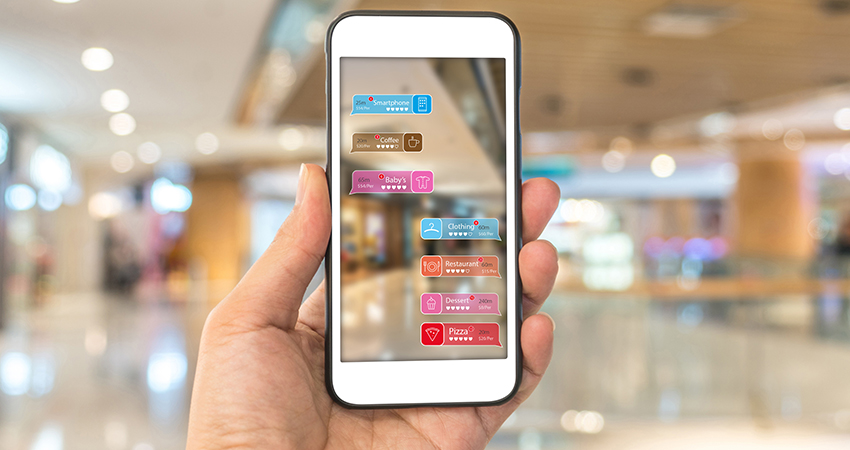Unless you’ve been living off the grid without your smartphone for the past few years, you’re likely aware of the latest trend in mobile technology: augmented reality (also known as AR). We’re all using AR, even if you (or your kids) are just addicted to using the face-altering filters on Snapchat. In short, AR is the ability to use a smartphone camera to project a graphic onto a phone screen and augment the reality around you, giving users a more interactive experience.
Why are retailers embracing it? Put quite simply, the modern state of retail is all about customer convenience, and AR is revolutionizing that. According to AR entrepreneur Cortney Harding, it has the unique ability to “increase conversion quite a bit by taking the guesswork out of it.” The modern shopper of 2018 is busy and on-the-go, and doesn’t always have the time to dedicate hours to finding the perfect sofa for a new apartment or a pair of shoes for a pressing event. The power of AR is that it can take traditional, time-consuming shopping trips and simplify them for the shopper.
AR has also found a home in retail for yet another enticing reason—its ability to blend the in-store and digital store experience for shoppers. It has proven to be an app feature that is both fun and functional—obviously, a home run for any mobile app and mobile user. The stats reflect this sudden consumer embrace of AR: according to a recent Daymon study, 61% of shoppers prefer stores that offer augmented reality experiences, 71% of them say they would return more often to retail locations that use AR, and 40% would be willing to pay for the experience.
Several retailers and brands have already developed and implemented AR capabilities, including:
- L’Oréal: The beauty retailer’s AR technology allows customers to ask for product recommendations through video chat in the mobile app. A consultant can then pick a product for a customer and have the customer virtually try on the makeup through video chat. When a customer is ready to make a purchase, they can buy the recommended product through the app.
- Ikea: The mobile app uses AR to help consumers envision where a potential piece of furniture will fit into their living space, also allowing the shopper to share the “vision” with friends and family.
- Argo: Argo teamed up with Lego to allow fans to see AR versions of Lego models through its mobile app. Consumers can see full size renditions of Lego toys in action using the app, as well as minute details of each piece.
Given these kinds of success stories, it should be no surprise that consumer interest in AR is taking off in huge, measurable ways. According to data from Sensor Tower, apps that use Apple’s AR Kit have generated more than 13 million downloads since September. Naturally, Apple is responding to these numbers with big plans, including more advanced sensors and image reading to provide more accurate and realistic images on a mobile screen. Because of this, industry experts are predicting that by the end of the year, more than 800 million smartphones will be equipped with hardware built to provide the most remarkable AR experiences we’ve ever seen on a mobile screen.
As AR explodes and permeates every sector of the mobile industry, it is important for retailers to think carefully about how an AR-equipped app could benefit their brands. AR can provide an extremely significant opportunity: the ability to place a product in a customer’s line of view before they even make it to the store. What’s more, AR can easily create the type of micro-moments consumers expect to have with their favorite brand—the type of moments that lift brand loyalty now and in the future.

